This display case in the museum surprised me with some amazing specimens. They were created by nature, and they could as well be futuristic sculptures designed by avant-garde artists ;) I liked the fossil the most, which you can see in the photo above - the Radiolaria model from the Alievium genus. Both the name and the shape remind me of metaphysical phenomena, and these are "planktonic microorganisms that drift near the surface of the water, in sea waters" (source: plaque in the museum).
Ta gablota w muzeum zaskoczyła mnie niesamowitymi okazami. Stworzyła je natura, a równie dobrze mogłyby być futurystycznymi rzeźbami zaprojektowanymi przez awangardowych artystów ;) Najbardziej spodobała mi się skamieniałość, którą możecie zobaczyć na zdjęciu powyżej - model Radiolarii z rodzaju Alievium. Zarówno nazwa, jak i kształt kojarzą mi się ze zjawiskami metafizycznymi, a to "planktoniczne mikroorganizmu, które dryfują przy powierzchni wody, w wodach morskich" (źródło: tabliczka w muzeum).

Another interesting exhibit were diatoms. They looked a bit like elements of a beehive or fragments of the cosmic world. They were yellow in color, had many holes, and were made of hard shells.
Kolejnym ciekawym eksponatem były okrzemki. Wyglądały trochę jak elementy pszczelego ula albo fragmenty kosmicznego świata. Miały żólty kolor i wiele dziurek oraz zbudowane były z twarde skorupy.
You can see cocoliths in the photo below. They are single-celled algae that produce calcareous plaques. They look like creatures from another world to me. Very strange and interesting at the same time.
Na zdjęciu poniżej możecie zobaczyć kokolitowce. To jednokomórkowe glony wytwarzające wapienne płytki. Dla mnie wyglądają jak stwory z innego świata. Bardzo dziwnie, a zarazem interesująco.
And here are more interesting specimens that look like sculptures. They show various foraminifera that look like petrified cacti. Mostly they have a calcareous shell.
A tu kolejne ciekawe okazy, wyglądające jak rzeźby. Przedstawiają różne otwornice, wyglądające jak skamieniałe kaktusy. Przeważnie mają wapienną skorupkę.
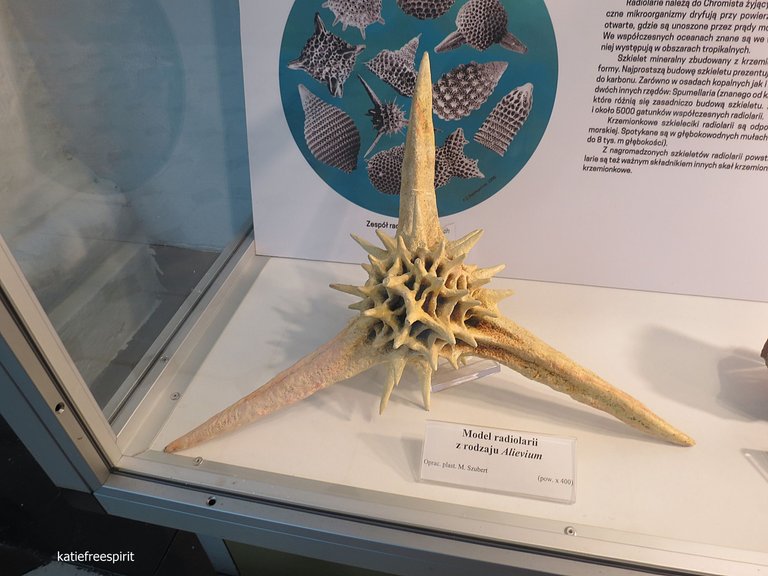
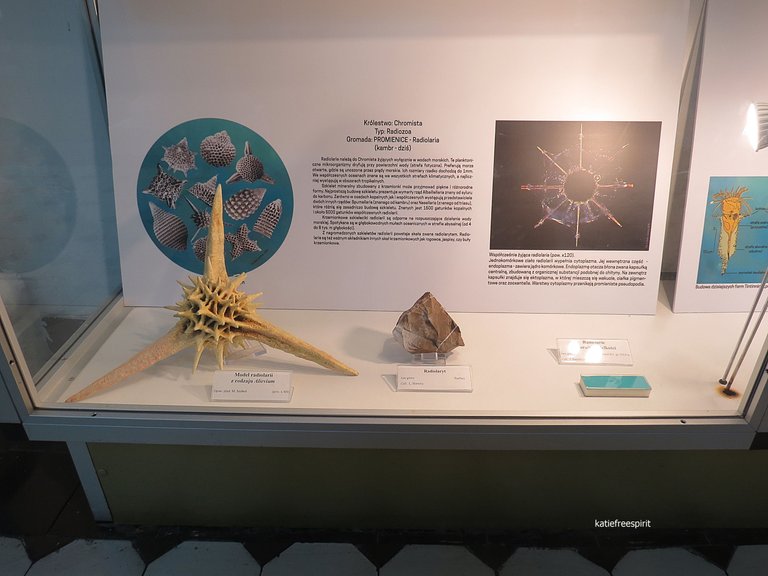
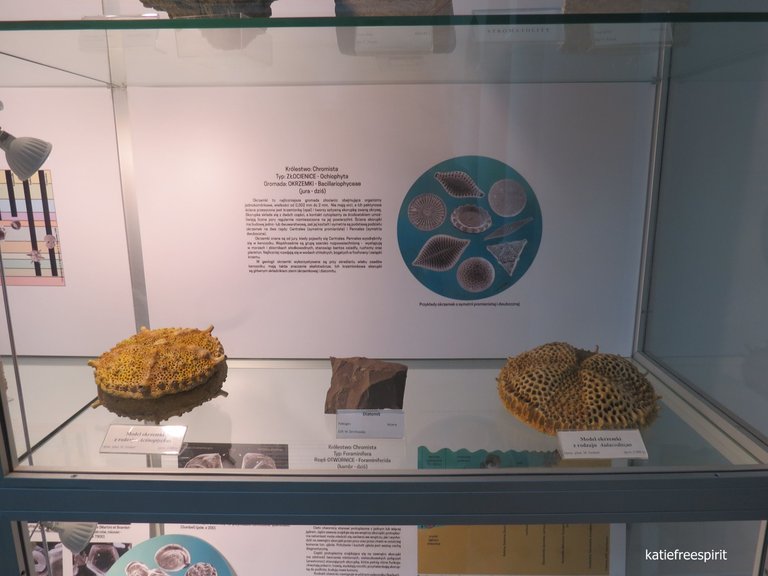
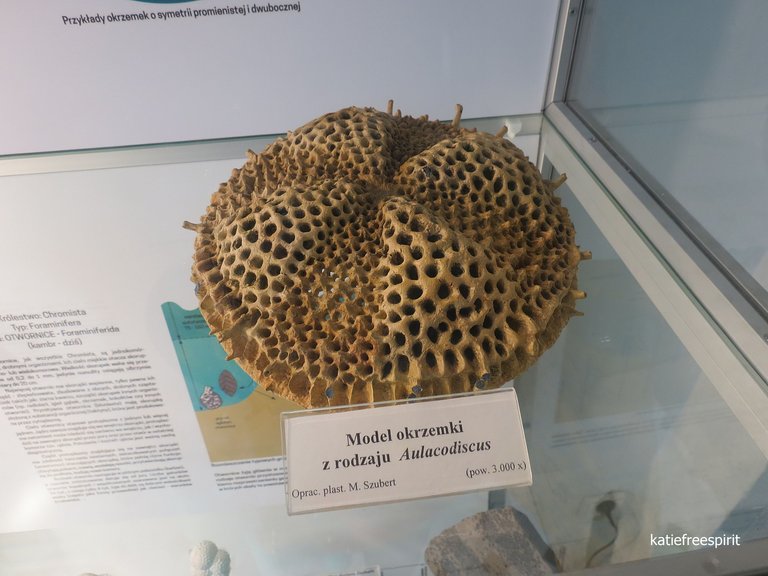
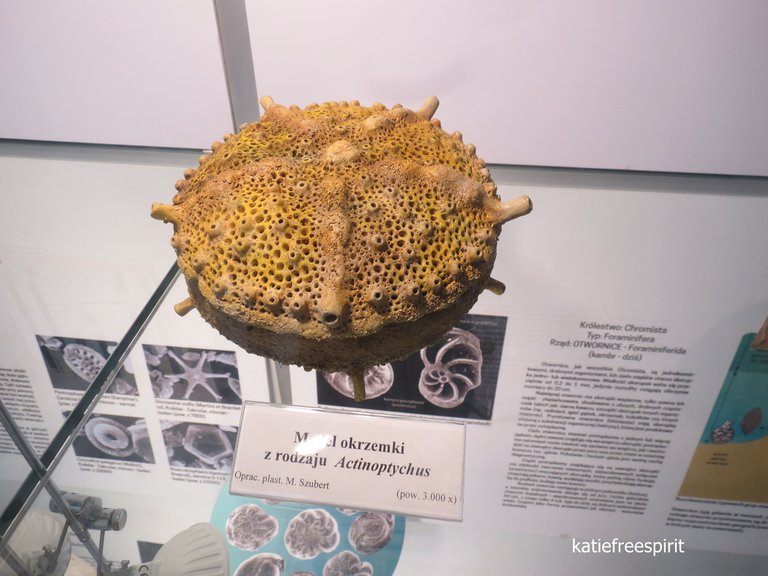
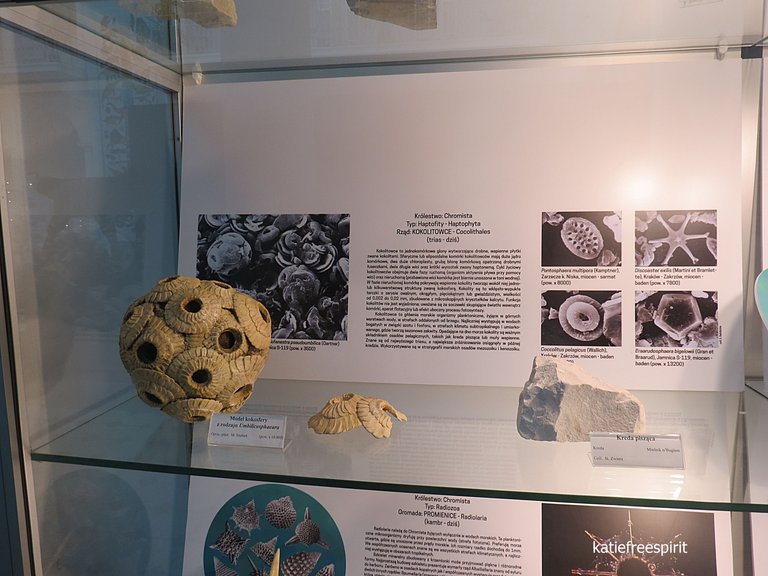
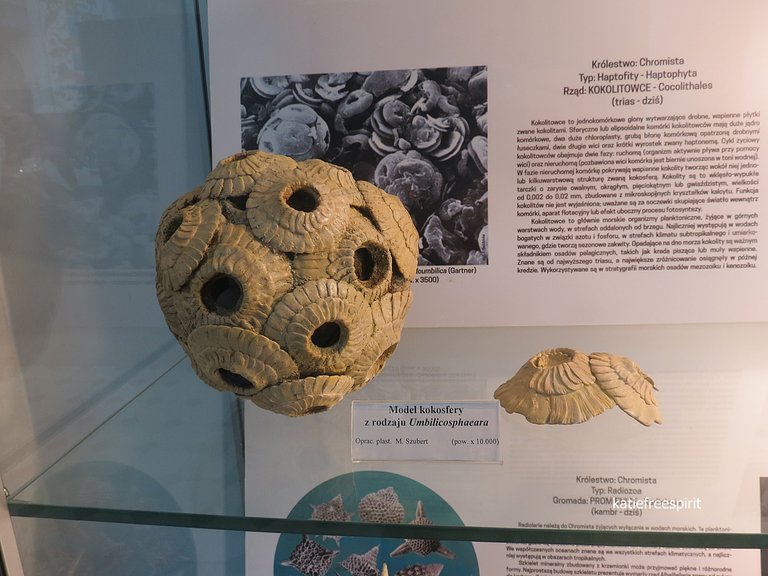
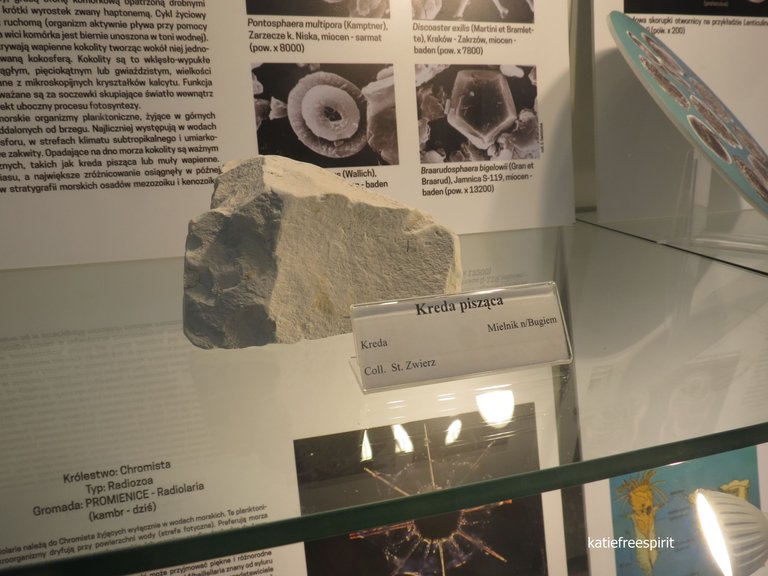
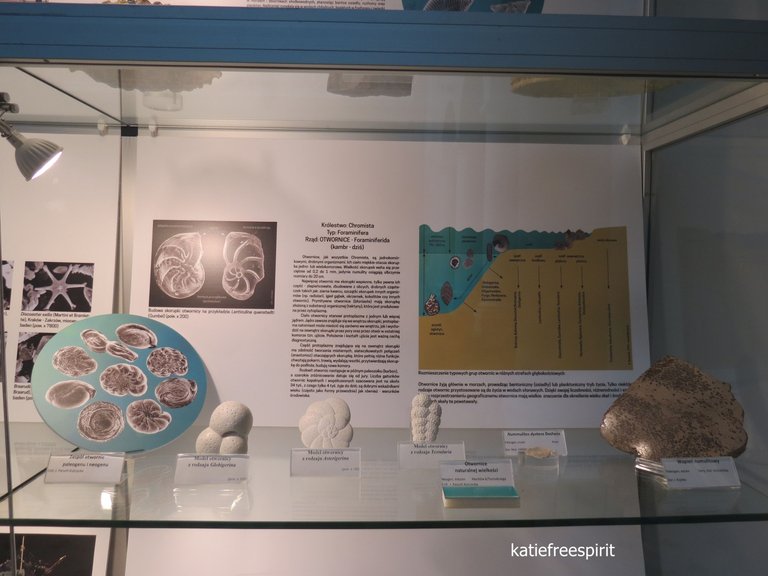
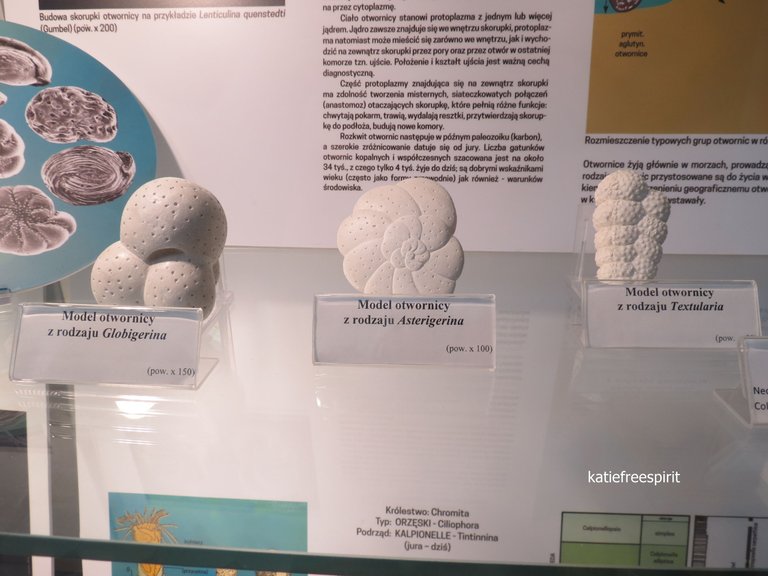
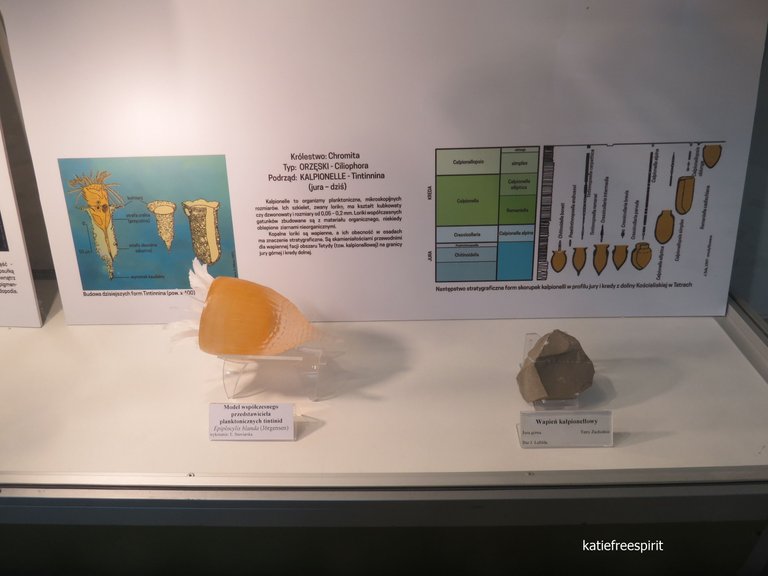
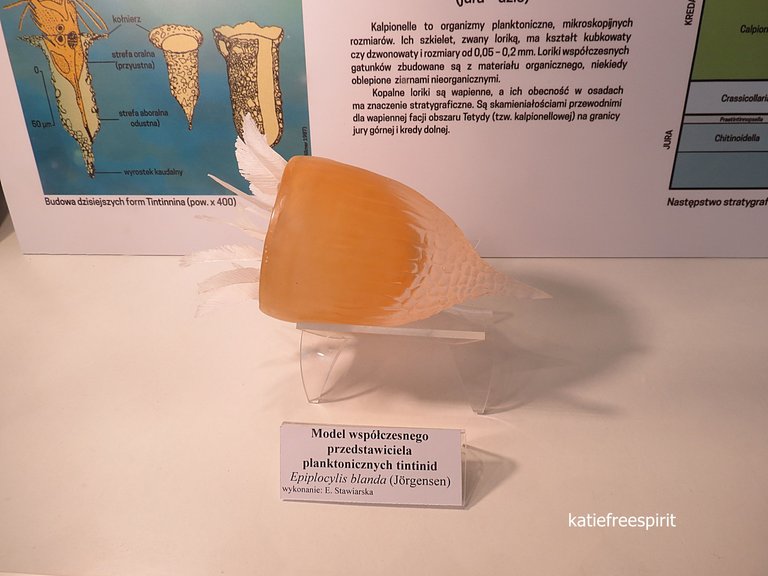
Congratulations, your post has been added to Pinmapple! 🎉🥳🍍
Did you know you have your own profile map?
And every post has their own map too!
Want to have your post on the map too?
Congratulations @katiefreespirit! You have completed the following achievement on the Hive blockchain and have been rewarded with new badge(s) :
Your next target is to reach 700 posts.
You can view your badges on your board and compare yourself to others in the Ranking
If you no longer want to receive notifications, reply to this comment with the word
STOPTo support your work, I also upvoted your post!
Moja babcia i dziadek byli geografami i czasem pokazywali mi różne ciekawe kamienie, ale to muzeum - wow! Mega mnie oczarowało 😊